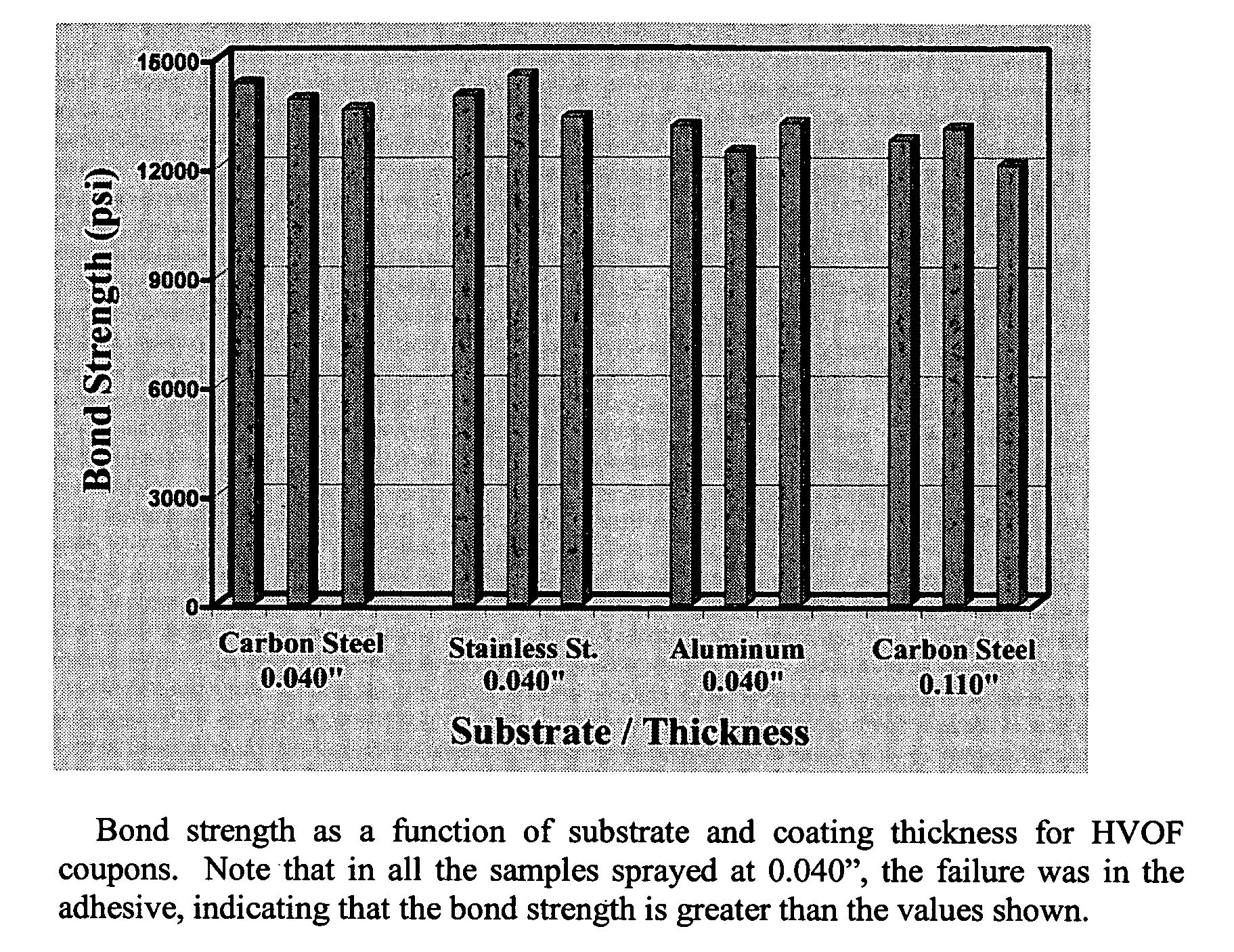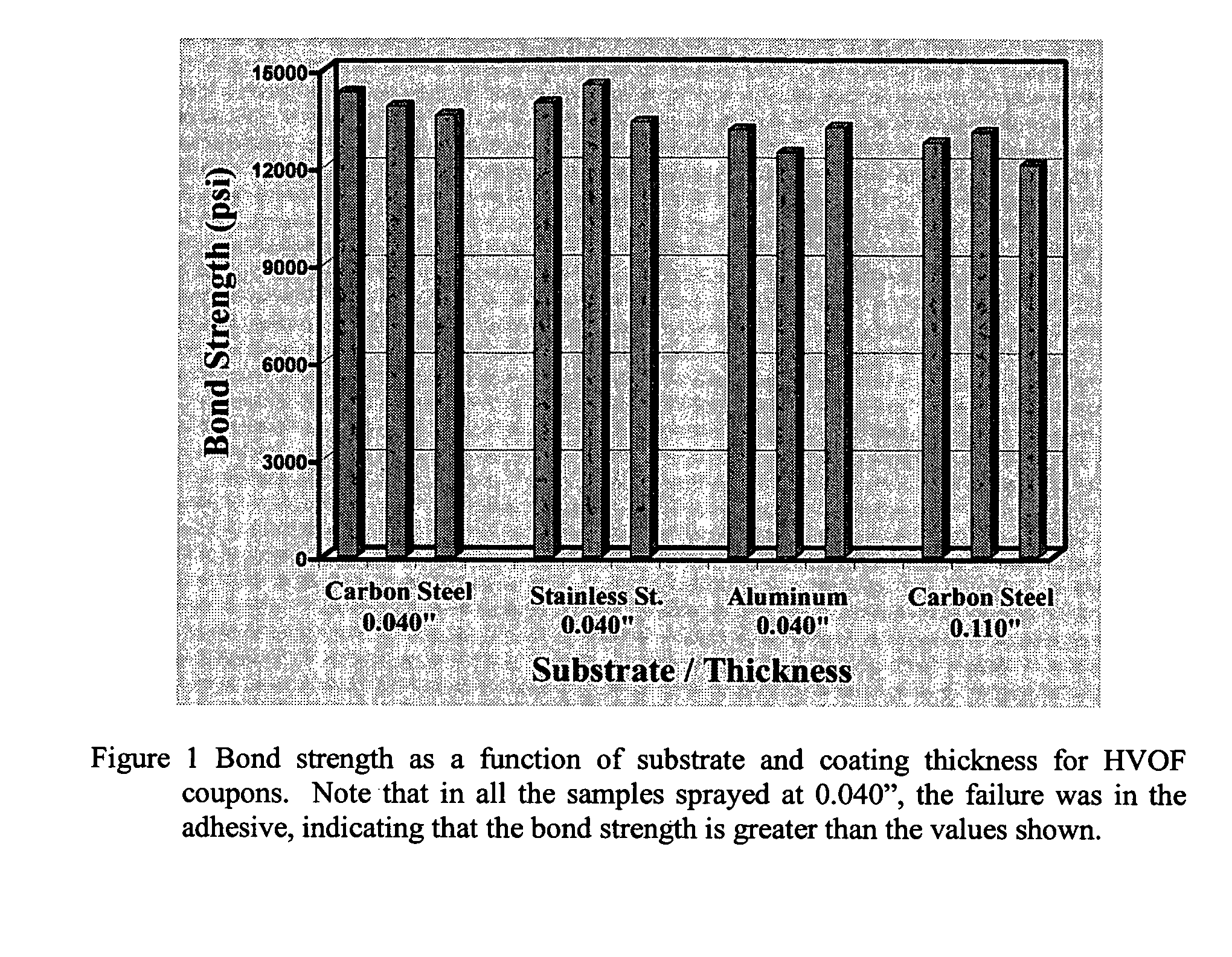Highly active liquid melts used to form coatings
a liquid melt, high-active technology, applied in the direction of metallic material coating process, plasma technique, electrical equipment, etc., can solve the problems of metal coating field serious obstacles, metal coatings are not easy to bond well with ceramic materials, and base metals are susceptible to further oxidation
- Summary
- Abstract
- Description
- Claims
- Application Information
AI Technical Summary
Benefits of technology
Problems solved by technology
Method used
Image
Examples
Embodiment Construction
[0017]Exemplary coating alloys were produced including highly active materials consistent with the present invention, including Super Hard Steel™ coating compositions which are an iron based glass forming alloys that exhibit extreme hardness when processed by various methods into high performance coatings.
[0018]Bond strength tests were conducted using two types of feedstock. First, a high velocity oxy-fuel sprayed coating was provided to a substrate using an atomized powder having a composition of 60.1 wt % iron, 2.3 wt % manganese, 20.3 wt % chromium, 4.9 wt % molybdenum, 6.4 wt % tungsten, 3.6 wt % boron, 1.0 wt % carbon, and 1.4 wt % silicon and a nominal particle size in the range of 22 to 53 microns. Second, a wire-arc sprayed coating was applied to a substrate using a cored wire having a 1 / 16 inch diameter and a composition of 68.0 wt % iron, 23.2 wt % chromium, 1.2 wt % molybdenum, 1.5 wt % tungsten, 3.6 wt % boron, 0.9 wt % carbon, 0.7 wt % silicon, and 0.8 wt % manganese.
[0...
PUM
| Property | Measurement | Unit |
|---|---|---|
| Length | aaaaa | aaaaa |
| Length | aaaaa | aaaaa |
| Thickness | aaaaa | aaaaa |
Abstract
Description
Claims
Application Information
 Login to View More
Login to View More - R&D
- Intellectual Property
- Life Sciences
- Materials
- Tech Scout
- Unparalleled Data Quality
- Higher Quality Content
- 60% Fewer Hallucinations
Browse by: Latest US Patents, China's latest patents, Technical Efficacy Thesaurus, Application Domain, Technology Topic, Popular Technical Reports.
© 2025 PatSnap. All rights reserved.Legal|Privacy policy|Modern Slavery Act Transparency Statement|Sitemap|About US| Contact US: help@patsnap.com


